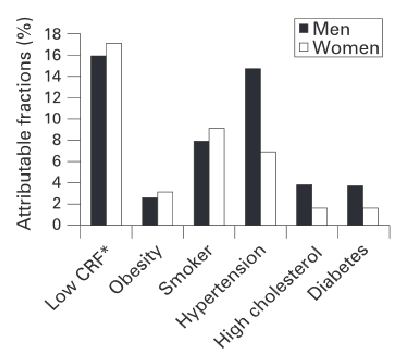


Sign-up for {N}power to get exclusive discounts, newsletters, members-only features, and more!
 Denver - Design District - Alameda and Broadway
Denver - Design District - Alameda and Broadway
368 S Broadway
Denver, CO 80209
United States
 Preferred Store:
Select a Store
Preferred Store:
Select a Store

Our bodies are meant to move. With today’s busy schedules, it can be difficult to make time and find the motivation to maintain the fitness our bodies crave. While ignoring physical activity might seem innocent enough, it is actually one of the most dangerous health risks we can impose on ourselves!
 Let me put this in perspective just a bit: According to the World Health Organization, the world-wide statistics reveal that cardiovascular disease (CVD) is both the number one cause of death around the world, and also the number one cause of death in America.[fn value=1][/fn] You can bet that many health scientists are largely invested in understanding and researching more about the risk factors of CVD. In 2009, Dr. Stephen Blair published a study where he compared the relative risk of acquiring CVD with its preventable risk factors, which include type II diabetes, high cholesterol, high blood pressure, cigarette smoking, obesity and a lack of physical activity. He, and many other health scientists since, have determined that a low fitness level is the most influential of preventable risk factors in predicting your risk of CVD.[fn value=2][/fn]
Let me put this in perspective just a bit: According to the World Health Organization, the world-wide statistics reveal that cardiovascular disease (CVD) is both the number one cause of death around the world, and also the number one cause of death in America.[fn value=1][/fn] You can bet that many health scientists are largely invested in understanding and researching more about the risk factors of CVD. In 2009, Dr. Stephen Blair published a study where he compared the relative risk of acquiring CVD with its preventable risk factors, which include type II diabetes, high cholesterol, high blood pressure, cigarette smoking, obesity and a lack of physical activity. He, and many other health scientists since, have determined that a low fitness level is the most influential of preventable risk factors in predicting your risk of CVD.[fn value=2][/fn]
The human body is meant for regular physical activity. In order to achieve optimal health, you must have both regular exercise and a healthy diet. Neglecting one or the other limits your potential for health. Unfortunately, physical activity rates are dropping year over year. In a CDC review, only 64.5% of American adults got in enough physical activity in 2007, which dropped to 48% by 2014.[fn value=3][/fn] [fn value=4][/fn]Whether by lack of motivation, or frustration with unrealized goals, more than 50% of individuals who begin a structured exercise program will drop out within the first 6 months.[fn value=5][/fn] Nationwide, Americans are not getting enough physical activity.
There’s a phrase going around that you may have heard: “Sitting is the new smoking.” More and more, health scientists are learning that sedentary behavior, defined by the lack of physical activity, is dangerous for our health. This month, as part of our theme for supporting a healthy heart, I encourage all of you to find a way to become physically active! As spring approaches and the weather becomes more inviting, consider trying:
Swing by your local Natural Grocers and speak with your Nutritional Health Coach for more details on nutrition for heart health, and for more tips!



Sign-up for {N}power to get exclusive discounts, newsletters, members-only features, and more!
